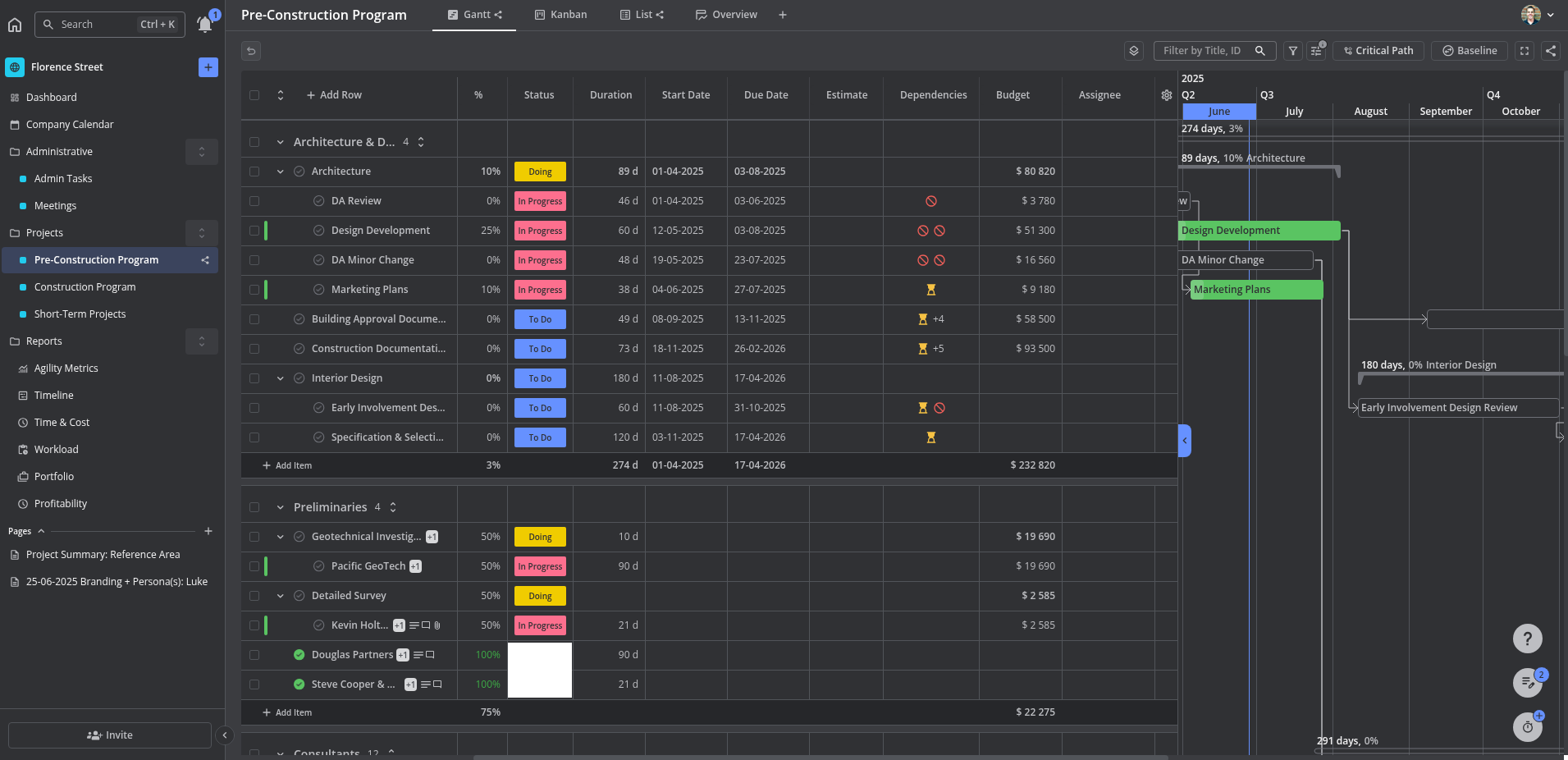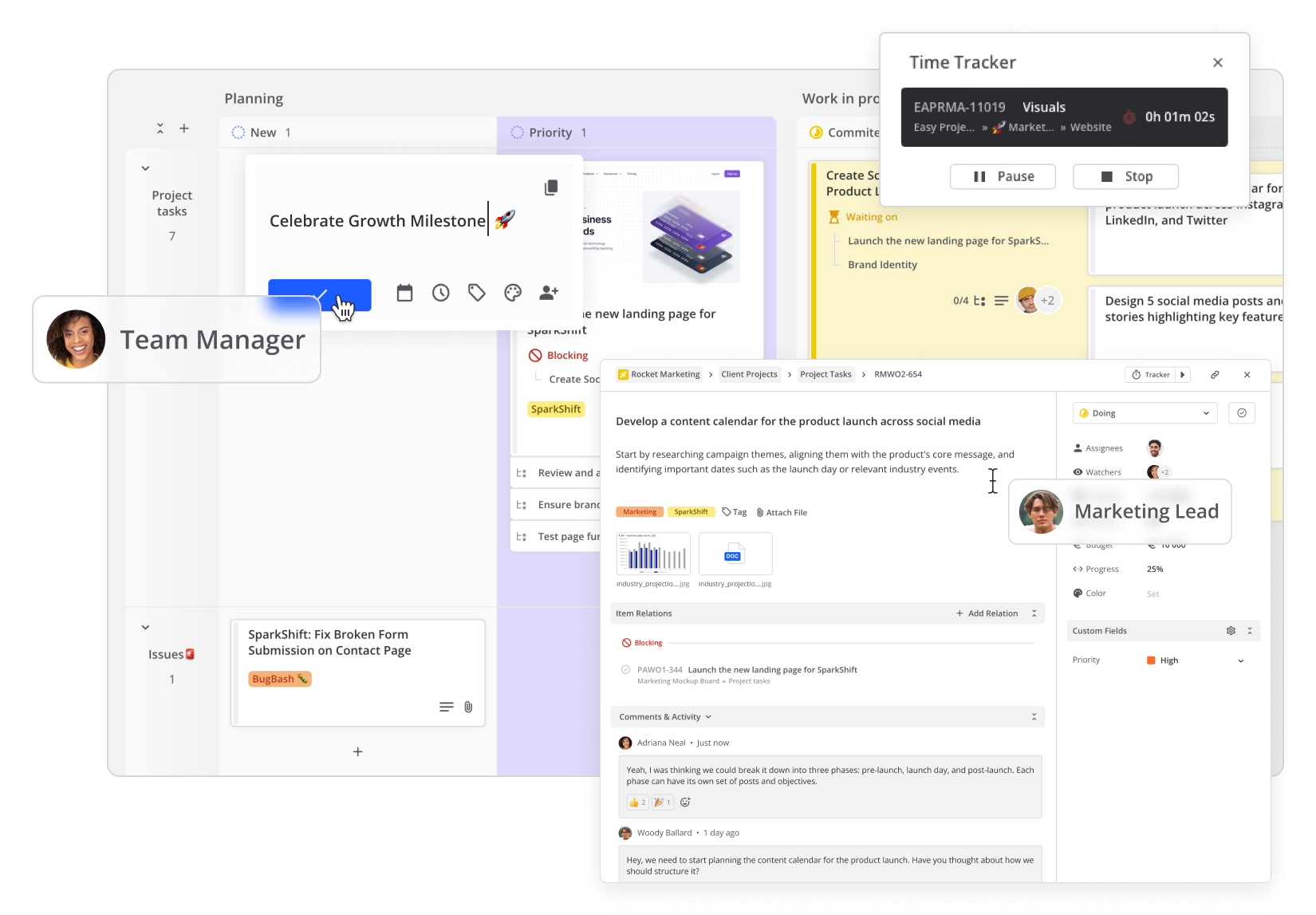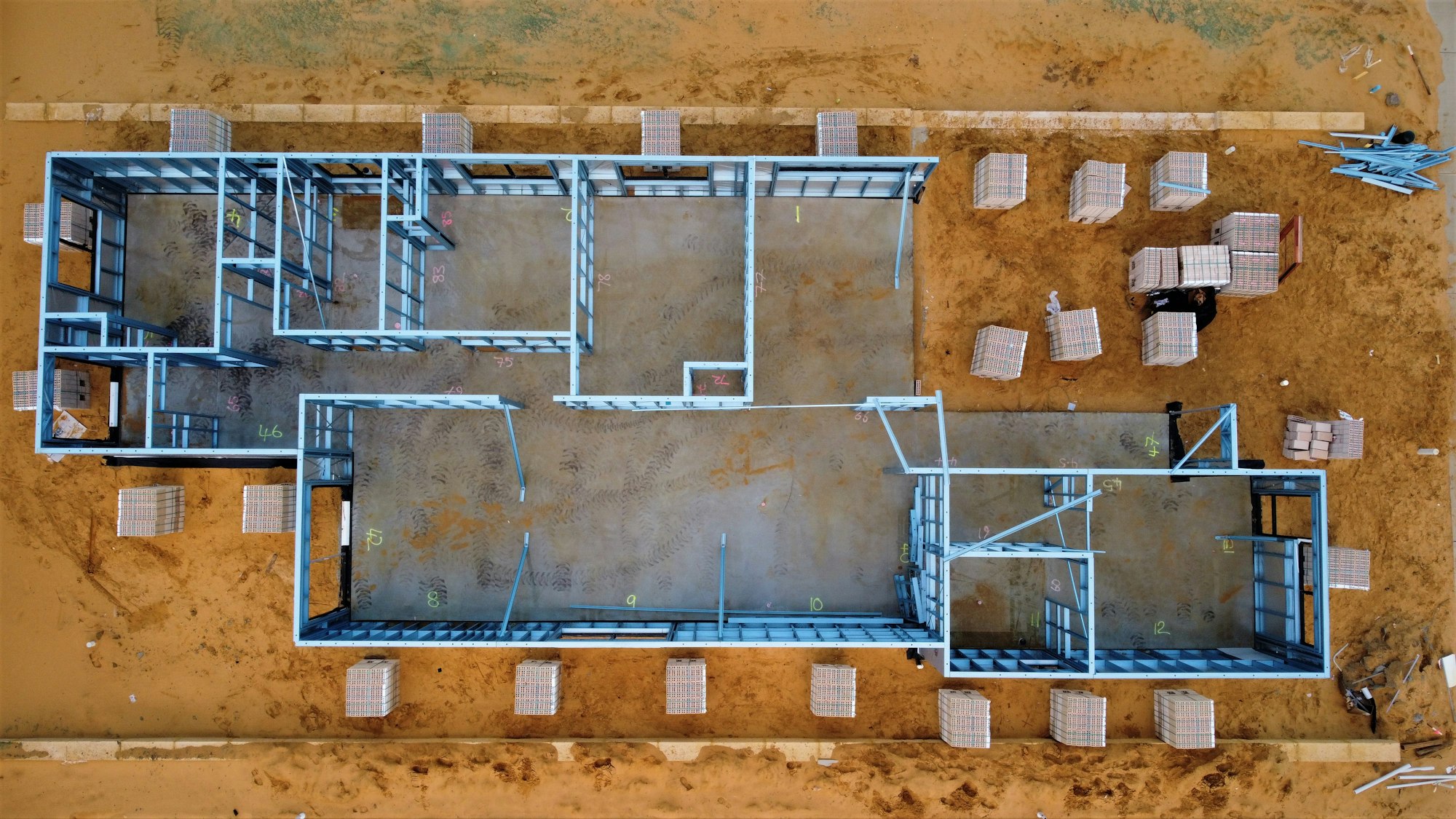You've come to the right place to learn all about residential construction and quality management. Before we forget, if someone forward you this newsletter, don't forget to subscribe to our newsletter so you never miss out!
🤗 Howdy Readers
In this newsletter, you'll find:
Post 1:
How Australia's National Home Improvement Scheme Could Transform Your Home – and Your Wallet
Post 2:
Understanding NCRs in Residential Construction: A Homeowner’s Guide
Post 3:
The Housing Fix We Desperately Need: Smarter Incentives, More Homes
📬️ Post 1: The Housing Fix We Desperately Need: Smarter Incentives, More Homes
Wish your cold, drafty old home would stop gulping down electricity and spitting out eye-watering bills?
Our latest article breaks down the proposed National Home Improvement Scheme (NHIS)—a blueprint to retrofit everything from the roof panels to the wall insulation so your place makes as much energy as it uses. It kicks off with 45,000 pilot homes, then aims for a whopping 1.4 million upgrades nationwide.
What’s in the toolbox? Rooftop solar, battery add-ons, airtight insulation, and smart energy controls—about $25-30k per house, paid back within ten years through lower power bills. Financing is refreshingly flexible: tack the cost onto your mortgage or let a “pay-through-your-electricity-bill” plan handle it—so no giant lump-sum cheques.
The upside doesn’t stop at your front door. Economists reckon the scheme could lift GDP 0.19 %, boost wages 0.31 %, and create 100,000+ tradie jobs. And because the average upgrade wraps up in under a week, you’ll spend more time enjoying cooler summers and cosier winters than camping among toolboxes.
Of course, it’s still a proposal—success hinges on enough skilled installers, tight quality controls, and private investors fronting up the cash. Our post walks you through the promises and the issues so you can decide whether to jump in early or watch the pilot phase from the sidelines.
Curious whether the NHIS could fatten your wallet and shrink your carbon footprint? Tap below to get the full story, complete with cost breakdowns, financing tips, and a reality-check on the risks. 👉 Read the full article here

📬️ Post 2: Understanding NCRs in Residential Construction: A Homeowner’s Guide
Ever had your builder drop the term “NCR” and you nodded along, secretly Googling later? Our latest post deciphers the phrase in plain English. You’ll find out that an NCR—short for Non-Conformance Report—is simply a written note that flags when something on site isn’t built exactly to plan, from using the wrong timber to skipping a concrete strength test.
The post walks you through what happens next: who raises the report (usually the site supervisor or quality-control person), the tidy four-step fix-and-prevent process, and the three ways a builder can close an NCR—leave it, rework it, or, in worst-case scenarios, rebuild the section altogether.
Learn how spotting issues early protects your budget and schedule, and pick up tips for keeping the conversation with your builder constructive rather than confrontational. If you want the confidence that your new home is being built the right way, this quick five-minute read is worth a click. 👉 Read the full article

📬️ Post 3: The Housing Fix We Desperately Need: Smarter Incentives, More Homes
Feeling priced out of Australia’s housing market?
You’re not alone—and our latest deep-dive explains why the current “fix” isn’t cutting it. In this post we break down the Property Council’s “Smarter Incentives, More Homes” report, which finds we’re on track to miss Canberra’s target of 1.2 million new dwellings by about 462,000 homes. That shortfall keeps prices high and vacancy rates painfully low.
So what’s holding things back? The government’s $3 billion New Homes Bonus won’t pay states a cent until 2029—far too late to spur construction now. Up-front funding, clearer milestones and longer lead times would give builders the confidence (and cash-flow) they actually need.
The upside of getting it right is huge: meeting the target could inject $128 billion into the economy and support around 368,000 jobs a year. Renters could save up to $90 a week—that’s $4,680 a year back in your pocket instead of your landlord’s. Even house-price growth might finally cool, especially in NSW, Tasmania and the NT.
Want the full story—plus a reality check on the scheme’s blind spots and what smarter incentives could look like? Click through for a brief tour of the numbers, the policy tweaks, and why bold action now could finally tip the scales toward affordable homes for all. 👉 Read the full article

💾 Software of the Week: Teamhood:
Drag-and-drop PM clarity for teams who’d rather build than babysit tasks. Execute-don’t over-think.
Teamhood is a browser-based project-management workspace that feels instantly familiar—think Trello’s drag-and-drop ease, but with serious horsepower under the hood. Its twin-level Kanban boards, one-click reports, and built-in dashboards mean you can plan, track and finish work without digging through menus or manuals.
Screenshot of Teamhood Gantt View

What is it?
At heart, Teamhood is a visual board where tasks move left-to-right as work progresses. Behind that simple idea sit extras like timelines (Gantt), workload heat-maps and real-time burndown or earned-value charts, so you always know what’s on track and what’s drifting.
Why should you care?
Email ping-pong, spreadsheet chaos and “Where did that file go?” vanish once everything lives in one place. Setting a Work-In-Progress (WIP) limit stops teams from piling on too much at once, keeping flow smooth and stress low.
Features that feel like benefits
- Two-level swimlanes & child tasks – Break big goals into bite-sized steps (e.g., In Progress → Review → Ready to Release → Done) so nothing slips through the cracks.
- Instant dashboards – Burn-up, progress or custom charts appear with a couple of clicks—no spreadsheets required.
- Custom fields on every plan – Label tasks however you like (budget, priority, client) and filter in seconds.
- Public share links – Send a read-only board to clients or suppliers and cut meeting time in half.
- Affordable tiers (plus a forever-free option) – Pay only when you outgrow the free plan; even the mid-tier is cheaper than most coffee-shop Wi-Fi budgets.
Who’s it for?
Small agencies, builders juggling trades, volunteer committees—anyone who needs a clear view of “who’s doing what, by when” without hiring an IT department. Reviewers praise the quick learning curve and painless rollout, so non-tech teams get productive in days, not months.
Good to know
Runs in any modern browser and via a lightweight desktop wrapper for Windows and macOS; an iOS/Android app exists but is pared back, so plan complex changes on the web version. Steady internet is required—Teamhood stores your boards in the cloud.
Our take
Thoughtful UI decisions—intuitive board edits, sensible defaults, clear reports—mean you spend time moving work forward, not hunting for buttons. If you’ve bounced off clunky PM tools before, give Teamhood 15 minutes; odds are you’ll stay for the long haul.
👉 Learn more about Teamhood here or click the link below:

ICYMI - the most important construction news from this week
🚀 The latest residential construction news from new sources around Australia for the news week ending 28-06-2025 🔥
Theme of the Week
"Australia’s housing tug-of-war"
More incentives and construction reforms on one side, mounting affordability and consumer-protection worries on the other.
Every news headline circles back to housing supply and cost. We see new incentives—NSW’s $1 billion guarantee, budgets earmarking finance boosts, land releases, and proposed contract amendments—aimed at unblocking stalled projects and boosting build-to-rent, micro-apartments, and modern construction methods.
Yet parallel stories highlight lobbying push-backs (Property Council of Australia, HIA, MBA), landlords dodging tenant safeguards, penalties for poor building practices, and warnings of social fallout from skyrocketing prices.
All these headlines seem to show a nation racing to build more homes while grappling with who truly benefits and how to shield consumers.
Feels like analysis paralysis—consumers suffer while the talking heads argue over the shade of blue..
Music of the week
“Money” by Pink Floyd (1973)
“And nobody knows him, and nobody cares.”
The week’s headlines are all about cash-driven housing moves—tax breaks for build-to-rent investors, billion-dollar guarantees, record property prices—while home buyers and renters watch affordability slide into the sunset clause.
"Money" rails against greed and the widening gap between “haves” and “have-nots,” much like the tug-of-war we’re seeing: big incentives and bigger profits on one side, consumers footing the bill on the other.
Can't see the video embed below? Click here to watch on Youtube.
We've highlighted our favourite news articles for the week by marking with a 🌮 or five (yes, we've changed to Tacos instead of burritos).
22-06-2025
1100 units in limbo: The projects at risk of not going ahead - [LINK]
Our comment: Remember, the PCA is a lobby group—similar to the Housing Industry Association. It represents its members, not consumers. SOURCE.
Victorian build-to-rent landlords dodge new minimum lease terms - [LINK]
Article excerpt: “Industry groups challenged the plan, citing research showing that between 10 and 30 per cent of tenants signing leases in the city’s tenants-only complexes had specifically sought shorter terms.”
Our comment: Lobby groups opposed the government’s proposal on behalf of their members, ensuring the BTR model went ahead. Landlords can still evict tenants under existing rules while claiming new tax breaks—consumers lose out.
2025 ACT Architecture Awards - [LINK]
Wendys Flagship Restaurant – Adelaide & Albert Streets, Brisbane City - [LINK]
🌮🌮 Warning as micro-apartment housing trend comes to Australia: ‘Two carpark spaces’ - [LINK]
Our comment: Like Wendys, micro-apartments combined with build-to-rent are an investor’s dream—higher yield per m².
🌮 Australian house prices soar into winter - [LINK]
23-06-2025
🌮🌮 Who’s liable? Builders, consultants and home-building claims - [LINK]
Our comment: In contracts, timing is everything.
Labor’s latest non-solution to the housing crisis - [LINK]
Private housing tenants scared to ask about repairs - [LINK]
Our comment: Without firm regulation, build-to-rent could leave more tenants afraid to speak up. Profit motives rarely align with best intentions when no safeguards exist.
The truth about Australia’s housing crisis - [LINK]
Start at the bottom to build housing - [LINK]
🌮🌮 Builders behaving badly results in $4.4 m penalty and personal liability of over $500k each - [LINK]
Mortgages dropping as supply issues persist - [LINK]
🍆🍆🍆 Updated plans lodged for Australia’s tallest tower in Southport CBD - [LINK]
24-06-2025
Land for 26,000 homes to be released for housing by 2030, with most slated to become units - [LINK]
Construction cost pressures persist amid economic shifts - [LINK]
There’s enormous movement in Modern Methods of Construction—maybe it’s even nearing mainstream? - [LINK]
Our comment: According to my sources, Modscape has received government incentives to set up manufacturing facilities.
25-06-2025
🌮🌮 The nuts and bolts of the Australian construction industry - [LINK]
NSW budget delivers $1 bn finance boost and planning reforms to accelerate housing - [LINK]
Buyer of epic mansion ‘The Lighthouse’ revealed - [LINK]
26-06-2025
‘A real breakthrough’: NSW’s $1 bn guarantee for new-home financing praised - [LINK]
Our comment: This guarantee should help developers secure pre-sales and unlock funding for new estates (good for throughput).
🌮🌮 Australia’s housing shell game - [LINK]
Tumbling inflation, housing-friendly state budgets set to shake up the property market - [LINK]
Is an extra 40 cm the secret to happiness in the bedroom? This economics expert doesn’t think so - [LINK]
Our comment: 🍆 Sounds like and episode from the TV Show "hung"
27-06-2025
🌮🌮🌮 Domestic Building Contracts Act Amendment Bill 2025 – What you need to know - [LINK]
Article excerpt: What about this “new right” for consumers to cancel contracts? The existing Act (section 41) already lets a building owner end a contract if the price rises by 15 per cent or more, or if completion takes more than 1.5 times the agreed period and the delay was unforeseeable.
Neighbours of luxury five-star hotel blindsided by social-housing plan - [LINK]
Our comment: Local fear often blocks affordable housing. Community comments in this article show the stigma at work.
Article excerpt: “We are all now living in fear that there’s this uncontrolled environment without any consultation,” said Ben Stephenson of the East Perth Community Group.
Just because someone looks or speaks differently doesn’t mean their hopes and dreams differ. Secure housing and employment build hope; without them, despair can lead to social decay. Let’s choose hope.
🌮🌮🌮 Australia’s housing boom leaves younger generations devastated - [LINK]
Article excerpt: “Ultimately, the housing cost rises of the last year will be seen as disastrous, causing long-term damage to the economy and social fabric.”
Our comment: Price-driven social decay is real. We’ve seen the divide in parts of South America and Mexico: “haves” and “have-nots,” rising crime, and fear. Small steps—unaffordable housing, soaring food costs, eroded hope—push any society toward unrest. Four-year political cycles treat symptoms, not causes. Decisive action is needed now; policing alone can’t hold back social decline.
28-06-2025
Holocene House – [LINK]
🌮🌮 Revised build-to-rent tax concessions lay foundations to encourage housing investment – [LINK]
Our comment: This article gives a clear rundown of how the build-to-rent model works.
🌮 Modular housing in Indonesia integrates solar power and smart tech – [LINK]
New financial year, new costs – how to stay ahead and protect your hip pocket – [LINK]
🌮🌮 Everyone is pumping Aussie housing prices – [LINK]
🌮🌮🌮 Private equity titan says housing, logistics and data centres are its three growth areas – [LINK]
Our comment: It would be reassuring if these private-equity giants spelled out how they will pay tax in Australia and reinvest in the communities renting or buying their projects. They’re shaping the market for maximum return—but at what cost to the country?
While their home base focuses on onshoring profits, will we let multinationals extract value here through build-to-rent developments—turning your future home into their investment—and then ship the earnings back to the US, all while Australian firms absorb new “tariff” taxes because they invest in the US but are not domiciled there?
Stay tuned to the Property Council of Australia to see how far it twists itself (into a pretzel) to attract US investment dollars. In the end, the home buyer is the product, neatly wrapped and presented under government-backed incentives.
Footnote: $25 billion and counting: Inside Blackstone’s Australian investments -[LINK]
Our comment: Dated 23 April 2024, this is admittedly speculation—but is it far-fetched to think promises were made to keep immigration high in sectors where private-equity firms have invested heavily? Deals are often pre-negotiated (not fair market), so why not ease demand to let the market settle?
Unless, of course, policymakers are beholden to outside interests or banking on the resulting tax revenue to bankroll future plans.
How to do higher-density housing well according to AHURI (see link below) – [LINK]
Article excerpt: “A research brief by the Australian Housing and Urban Research Institute (AHURI) shows that higher-density housing, when designed well, can enhance liveability, affordability, and wellbeing.”
AHURI article from Feb 2025 “How can higher-density housing be done well?” – [LINK]
Our comment: Most new residential developments stick to the same boxy designs: maximum floor area, zero style. If you want something attractive, it costs extra; if you only need shelter, developers oblige. I have yet to meet a developer who values liveability above price-per-box and net yield. These priorities often clash—hence the AHURI report’s point.
Given the industry’s resistance to social and affordable housing, and change in general, we’ll likely keep seeing the same boxes for years. The PCA may claim higher profits would lead to better design, but that’s doubtful. Smart, cost-effective design is possible; developers simply repeat what they know to control costs and reduce risk, not to build better.
The Last Word
We keep hearing that a few billion-dollar guarantees, fresh land releases, and fast-tracked approvals will somehow make homes affordable again—but the numbers (courtesy of Macroeconomics blog posts) still point the other way.
Supply pipelines remain tangled, construction costs stay stubborn, and rent stress is rising even where new incentives have rolled out. Yet week after week, lobbyists (PCA, HIA, MBA) and ministers cling to the comforting idea that the next tweak will fix everything, glossing over signals that the market is drifting further out of reach for ordinary buyers.
That optimism—well-intentioned or not—is much like the story in The Doobie Brothers’ “What a Fool Believes.” The song follows a man replaying a romance that never really existed, convinced he can reignite feelings that were never returned.
It's sometimes described as a cautionary tale about clinging to illusion when reality hurts too much to face. Likewise, Australia risks believing that modest policy tweaks alone will close a growing affordability gap that has been widening for decades.
If we keep replaying the same hopeful song while ignoring the underlying tune—wages lagging prices, speculative demand, and inadequate rental safeguards—we may look back and wonder, like the song’s narrator, why good intentions weren’t enough. Thoughts and prayers won't fix this problem.
So before we spin another press release into a promise, let’s ask whether we’re hearing real progress or simply the echo of what a fool believes.
Can't see the video embed below? Click here to watch on Youtube.
😶🌫️ That's all of today
The best way to support us is to share this this with two (2) friends who you think our content will help in some way.
Feel free to reach out on X or Mastodon or Bluesky - @obiwonky - 👋 Anthony
PS: Quality Management Checklist Access
All our published checklists are available to download via the Checklists Link in the navigation menu or directly at https://www.constructor.net.au/checklists/.
To download, simply enter your email when prompted. This allows us to assign you a free license—nothing more. Once completed, you’ll be able to view and download the checklists.
Each checklist is formatted on A4-sized paper for easy printing. Be aware that the files are larger than typical PDFs, around 25–35 MB each, as they are saved in CMYK (print-ready) format. This ensures the best quality for printing, even if it makes the files a bit “chunkier.”
Enjoy the checklists, we hope they help you identify quality improvements in your new home or next project - or at least, get you thinking.

C12 Fixing Stage recently added to the list
Please note: You’ll need to be a member and to log in to access the content.
Help us improve?
Head over to the Feedback tab in the navigation menu to share your thoughts, view our road map, and up vote feature requests. We want to hear from you—because no one likes the sound of one hand clapping.













